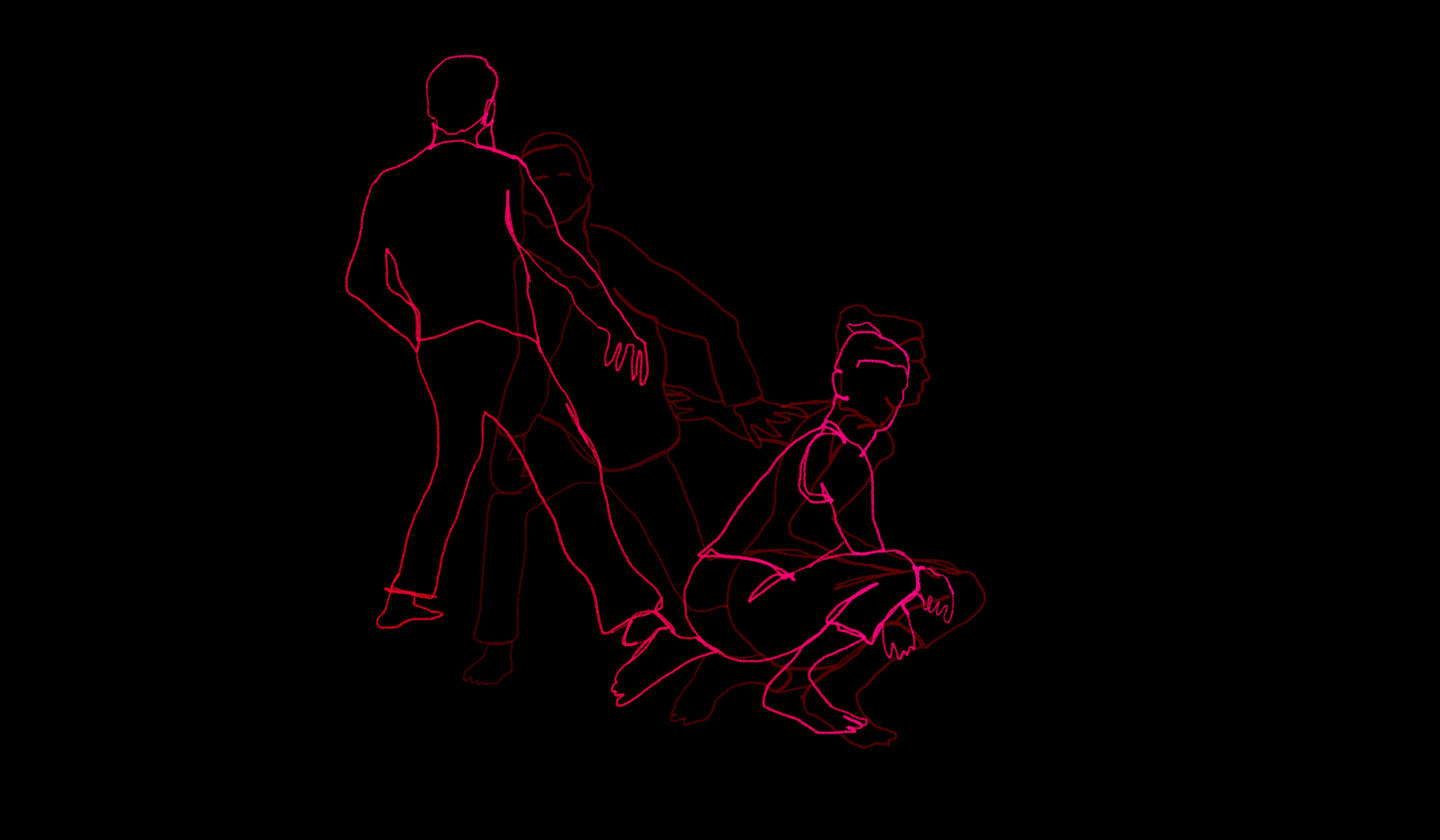Words by Maxine Flasher-Duzgunes.
A No-How Generator
is a habitat
for sustaining generative states
of not-knowing
~ Matthias Sperling
Under the surface of our feet, we predict earthquakes…we ache from marathons…we remember the rain. Inside our felt-sense is a seismograph reading the seconds of the moment and measuring the distance to the next. As if to echo his methods of motility, my conversation with Matthias Sperling, choreographer of No-How Generator, which has its London premiere on April 21 at the Lilian Baylis Studio, actually began without words.
One morning in mid-March, I attended his collaborator Katye Coe’s professional class at Independent Dance/Siobhan Davies Studios, unaware that eventually we would be discussing Sperling’s own theory of practice as a way of learning — what he calls “open practice.” Coe’s practice began generously in the form of hermeneutic movement scores, orienting us as dancers to this “back and forth” shift between learning and thinking that is shared by both Sperling and choreographer Deborah Hay. An earlier work of his entitled, “Loop Atlas” applied this concept of “looping,” of embodiment as the medium of imagination. According to Sperling, these generative movement states are not improvisatory but rather a way of “working with our perception as a material in our practice of performance.” It is about taking a step away from the audiovisual and into the somato-sensory, shaping what the body does and where it goes in between the letters of h a p p e n i n g.
“The landscape that [is] traveled through is always the same, but the journey is always different,” he says. “It cannot be kept because it’s a moment of embodied and lived experience. It can’t be pre-written.” Across the two performances, Sperling has invited two guests, SERAFINE1369 / Jamila Johnson-Small (April 21) and Fernanda Muñoz-Newsome(April 22) out of interest in how their practices involve divination. As the audience engages from surrounding cushions and chairs, these guests will be taking a “reading” of Sperling and Coe as a sort of live metabolisation of each other’s practices. Here he compared the phrase “taking a reading” to both the scientific sense – “as in…taking a reading with a measurement device” – and the magical sense – as in “the idea of taking a reading of a palm, taking a reading of tea leaves, taking a reading of the stars.” Working with the lived experience embraces the unpredictable aspect of performance that for so many artists is abandoned upon transporting their choreography to the stage.
For Sperling, whose interest in interdisciplinarity has taken the form of a 5-year research project with neuroscientists called NEUROLIVE, he prefers to foreground unpredictability as a poke at the question “what makes liveness special?” At one of their performances at Siobhan Davies Studios last fall, electroencephalogram devices were worn by audience members as a sort of measurement of a live reading. Throughout his research, Sperling places dance and neuroscience investigations as those which inform one another, instead of either one becoming the other’s object of study. The project, while independent of No-How Generator spirals back to Sperling’s larger question of being a knower and how to navigate the topographical web of one knowledge set intersecting another.
It is empowering to play the role of a knower in a performance. And in dance it can be more intuitive than rational, more bodily than language based. Everyone is a knower. In the context of dance making, Sperling calls knowledge generation a “choreographic experience, which…includes the experiences of not just a choreographer and a performer within choreography, but also an audience member, engaging with the choreographic work.” Within this, there is a mapping that occurs collectively, through the body, and within the performance’s constellation-like bounds of space-time. The bodily capacity to know is where embodiment becomes a medium; it’s the heart of where knowing is cultivated and from where it transcends toward choreography.
“When I’m witnessing dancers performing, I’m witnessing people who are having an experience as opposed to images or objects that are creating pictures or representations for me to look at that” Sperling says. “I’m looking at people who are experiencers.” In a rocking back and forth of weight, the body unfolds itself through action, and unfurls further and further down a rabbit hole of undetermined encounter. Hence the title “No-How” substituting the more familiar word, “know-how,” as a subtraction of predetermined “knowing” from the equation of movement creation.
In the concluding notes of his dissertation paper on no-how generation, Sperling cites the 19th century German art historian, Aby Moritz Warburg, a scholar known to singularly merge disciplines in how he “[traced] the reoccurrence of gestures through different times and places.” It is where Sperling’s interest in embodied cognitive science resembles Warburg’s phrase: “blossom grafted to a single stem.” As the foliage diverges, its roots remain shared. Through brain waves we chart journeys…we forecast storms…and we dance tomorrow. “Those are things that are just parts of us…beating.”
Creative credits:
Choreographer and performer: Matthias Sperling
Collaborating performer: Katye Coe
Guest Performers: SERAFINE1369 / Jamila Johnson-Small, Fernanda Muñoz-Newsome
Lighting and space designer: Jackie Shemesh
Clothing designer: Alexa Pollman
Clothing Fabricator: Mabel Luz Flores
Sound Consultant: Joel Cahen
Graphic Designer: Victoria Ford
Producer: Iris Chan
No-How Generator will take place on 21-22 April at the Lilian Baylis Studio, Sadler’s Wells. Header image by Victoria Ford. This written article was commissioned by Sadler’s Wells.
